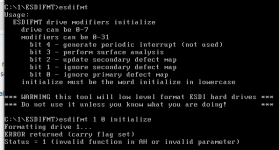Chuck(G)
25k Member
I've a blog entry that I posted years ago about reverse-engineering a combinatorial PAL using very simple hardware.
All of the other reverse engineering gizmos use essentially the same method, just using more modern hardware.
Where you get into the land of woo is trying to reverse-engineer the registered PALs. Memory can make determining function by brute force very, very difficult.
All of the other reverse engineering gizmos use essentially the same method, just using more modern hardware.
Where you get into the land of woo is trying to reverse-engineer the registered PALs. Memory can make determining function by brute force very, very difficult.



